The Wonders of the Deep Sea: Unveiling the Mysteries of the Ocean Depths
Dive into the deep sea, a mysterious world teeming with life in extreme conditions. Discover extraordinary creatures, and unique ecosystems like hydrothermal vents, and learn about the deep ocean's vital role in our planet's health. Unveil the secrets of Earth's last frontier.
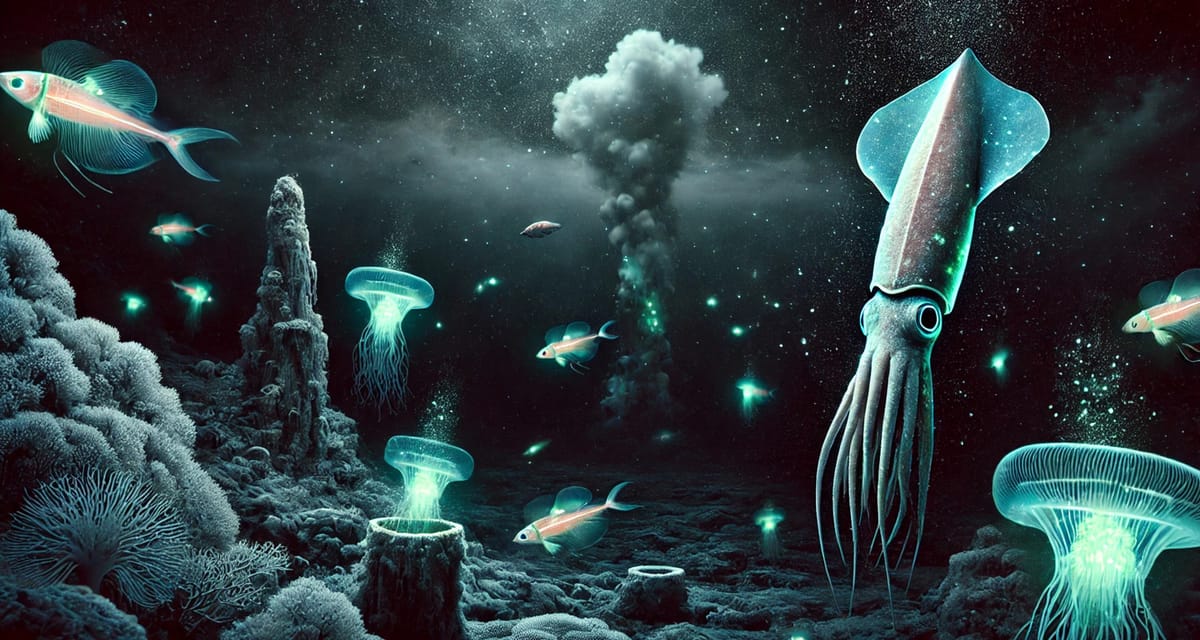
Imagine a world shrouded in perpetual darkness, where crushing pressure could implode a submarine in the blink of an eye, and where life takes on forms that seem more alien than earthly. This is the deep sea, the largest and least explored habitat on our planet, a realm of mystery and wonder that has captivated human imagination for centuries.
While we've conquered the highest mountains and ventured into outer space, the deep sea remains largely uncharted territory. It's a place where the rules of life as we know it are rewritten, where creatures have evolved extraordinary adaptations to survive in the most extreme conditions imaginable.
Join us on a journey into the abyss, where we'll unveil the secrets of this hidden world, encounter its bizarre inhabitants, and discover its vital role in our planet's health.
Plunging into the Abyss
The deep sea begins where the sun's rays can no longer penetrate, typically around 200 meters (656 feet) below the surface. From there, it descends into a vast, three-dimensional world that encompasses the midnight zone, the abyssal plains, and the deepest trenches, known as the hadal zone.
This is a world of extremes: immense pressure, frigid temperatures, and perpetual darkness. It's a challenging environment to explore, requiring specialized equipment and technology to withstand the crushing depths.
For centuries, the deep sea was considered a lifeless void. Early explorers, limited by primitive diving bells and dredging equipment, found little evidence of life in the depths. But as technology advanced, so did our understanding of this hidden realm.
Submersibles, remotely operated vehicles (ROVs), and autonomous underwater vehicles (AUVs) have become our eyes and hands in the abyss, allowing us to explore this alien world with increasing detail and precision.
What we've found is nothing short of astonishing. The deep sea teems with life, a dazzling array of creatures that have adapted to thrive in this extreme environment. From bioluminescent fish that glow in the dark to giant squid that lurk in the depths, the deep sea is a treasure trove of biodiversity, a testament to the resilience and adaptability of life on Earth.
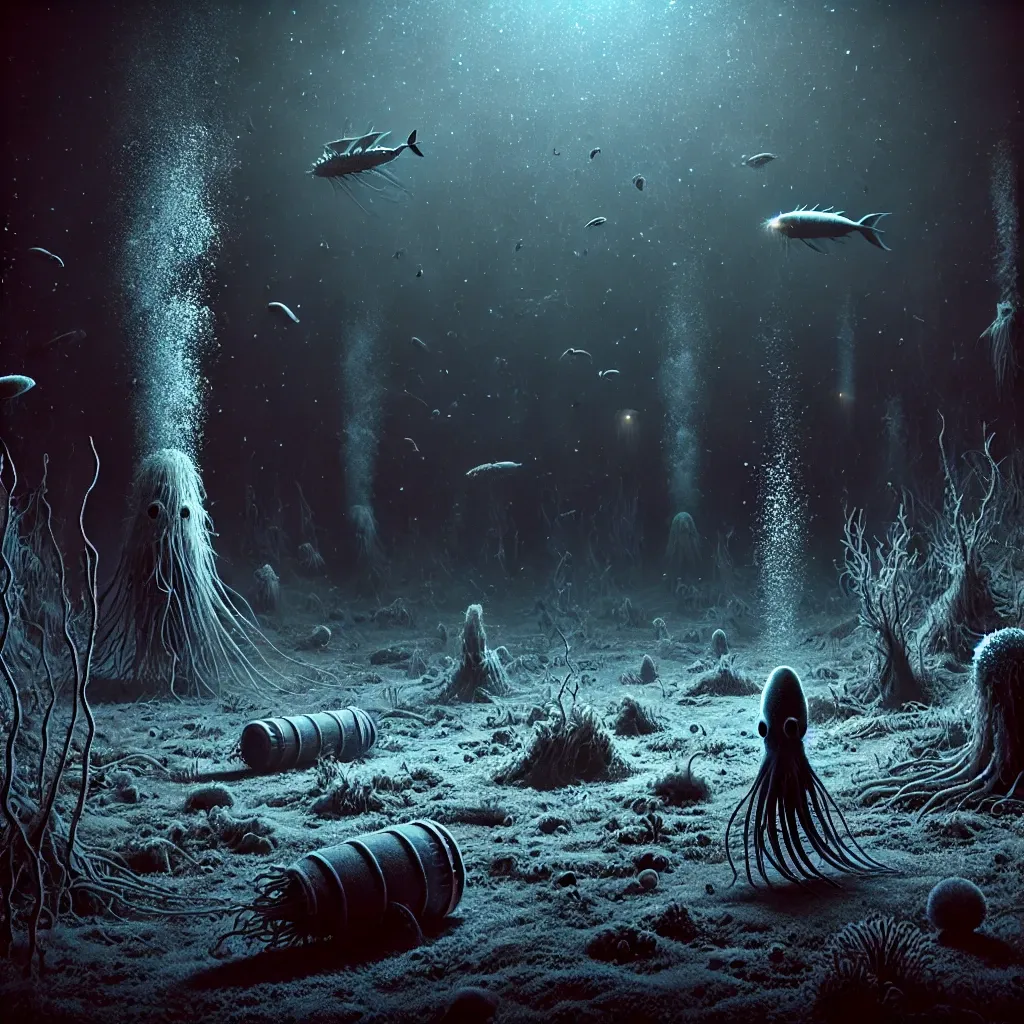
Life in the Deep: Adapting to the Extreme
Life in the deep sea faces a unique set of challenges. Imagine living in a world where sunlight never reaches, where the pressure is thousands of times greater than at the surface, and where temperatures hover near freezing. Yet, despite these harsh conditions, life has found a way to survive and thrive.
The Abyssal Environment
To understand the adaptations of deep-sea creatures, we first need to grasp the nature of their environment. The deep sea is divided into zones based on depth:
- Midnight Zone (200-1000m): Sunlight fades rapidly here, but some faint light still penetrates. Many animals in this zone have large eyes to capture any available light.
- Abyssal Zone (1000-4000m): This is the vast, flat expanse of the ocean floor, shrouded in perpetual darkness. Pressure here is immense, and temperatures are near freezing.
- Hadal Zone (6000m+): The deepest trenches of the ocean, named after Hades, the Greek god of the underworld. Conditions here are even more extreme, with pressures exceeding 1,000 times that at the surface.
Survival Strategies
Deep-sea creatures have evolved a remarkable array of adaptations to cope with these challenges:
- Bioluminescence: Perhaps the most iconic adaptation of deep-sea life is bioluminescence, the ability to produce light. In the absence of sunlight, many creatures use bioluminescence to attract prey, find mates, or defend themselves. The anglerfish, for example, uses a bioluminescent lure dangling from its head to attract unsuspecting prey. Viperfish have rows of light-producing organs along their sides, which they use for communication and camouflage.
- Gigantism: Another intriguing phenomenon in the deep sea is gigantism. Many deep-sea creatures grow to enormous sizes, far larger than their shallow-water relatives. The giant squid, for example, can reach lengths of over 40 feet. The reasons for deep-sea gigantism are still debated, but possible explanations include slower metabolisms, reduced predation pressure, and the influence of cold temperatures on cell size and lifespan.
- Other Adaptations: Deep-sea creatures have evolved a host of other remarkable adaptations. Some have developed unique feeding strategies, such as the gulper eel, which can swallow prey larger than itself. Others have extremely slow metabolisms, allowing them to survive on scarce food resources. And many have pressure-resistant bodies, with flexible skeletons and fluid-filled tissues that can withstand the crushing depths.
Meet the Creatures of the Deep
- Anglerfish: One of the most iconic deep-sea dwellers, the anglerfish has a bioluminescent lure dangling from its head to attract prey in the darkness. Its oversized mouth and expandable stomach allow it to swallow prey larger than itself.
- Giant Squid: Known for their colossal size, giant squids can grow up to 40 feet in length. They are elusive creatures, rarely seen by humans, and live at depths of 300 to 1000 meters.
- Gulper Eel: This eel-like fish has a massive, pelican-like mouth, which it uses to gulp large quantities of prey. It’s one of the strangest-looking fish in the deep, with a mouth much larger than its body.
- Vampire Squid: Despite its ominous name, the vampire squid is a small, gentle creature that feeds on marine snow—tiny bits of detritus that fall from the upper ocean layers. Its reddish-brown color and glowing organs give it a ghostly appearance in the dark.
- Fangtooth Fish: With some of the largest teeth relative to the body size of any fish, the fangtooth looks like it swam right out of a horror movie. But despite its fearsome appearance, it's relatively harmless to humans.
- Deep-Sea Hatchetfish: These fish have flattened bodies that help them blend into the dark waters, and their bioluminescent bodies make them nearly invisible from below.
- Hadal Snailfish: Found at the deepest ocean depths, this snailfish has been recorded as living more than 8,000 meters (26,000 feet) below the surface in the Mariana Trench. Their gelatinous bodies are specially adapted to survive in crushing pressure.
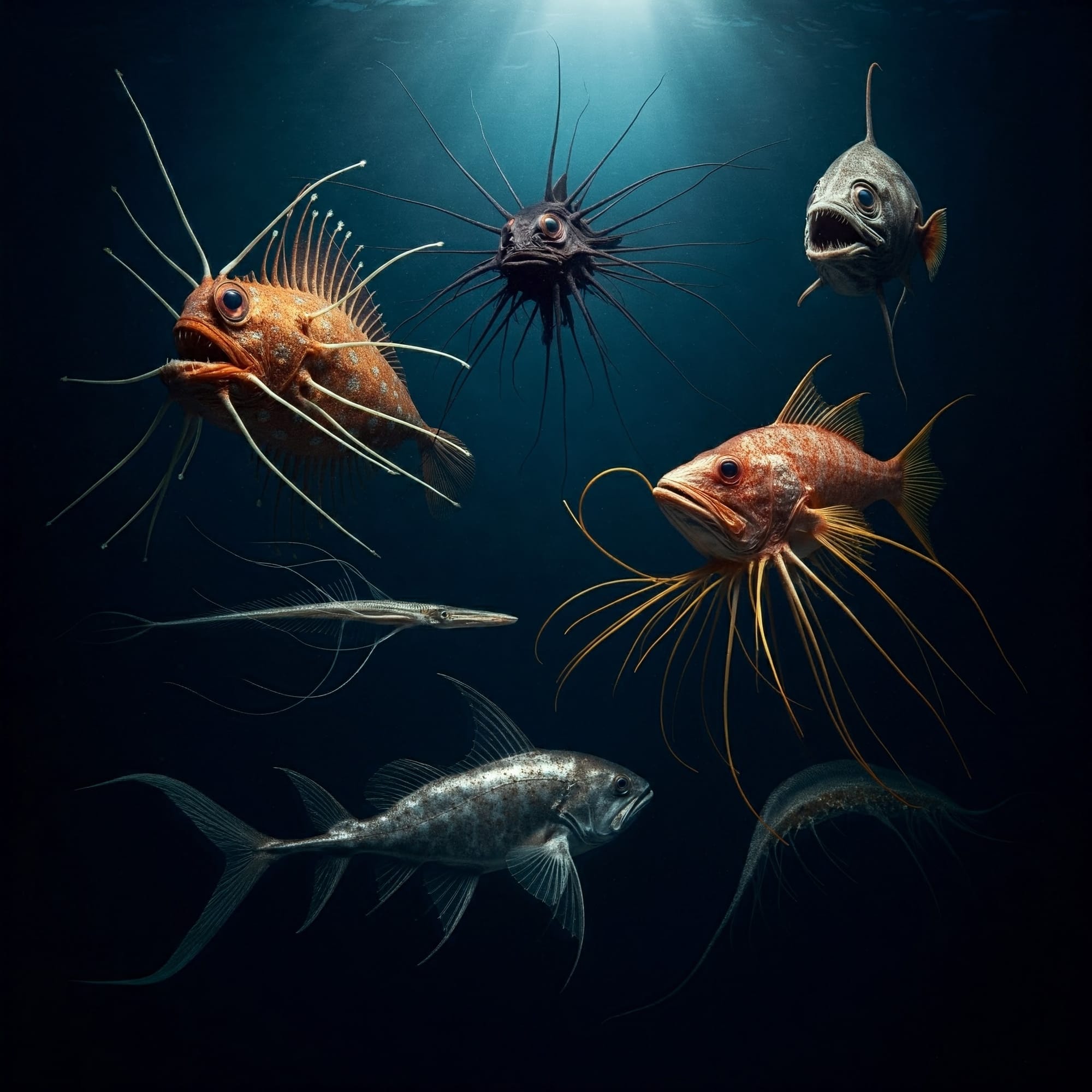
Deep-Sea Habitats: Oases in the Dark
While the deep sea may seem like a vast, uniform expanse, it's home to various unique habitats, each with its distinct community of life.
Hydrothermal Vents
Hydrothermal vents are perhaps the most fascinating and unexpected discovery in the deep sea. These underwater geysers, found along mid-ocean ridges, spew out superheated water rich in minerals and chemicals.
The chemicals, particularly hydrogen sulfide, provide the basis for a unique ecosystem that thrives in the absence of sunlight. Instead of photosynthesis, the foundation of most ecosystems, life around hydrothermal vents relies on chemosynthesis.
Bacteria use the chemicals from the vents to produce energy, forming the base of a food chain that supports a diverse community of organisms, including giant tube worms, clams, mussels, and crabs.
These vent ecosystems are like oases in the deep, teeming with life in an otherwise barren landscape.

Cold Seeps
Similar to hydrothermal vents, cold seeps are areas where fluids rich in methane and other hydrocarbons seep from the seafloor.
These seeps also support chemosynthetic ecosystems, though the organisms found here differ from those at hydrothermal vents.
Methane-eating mussels, for example, are a keystone species in cold seep communities.
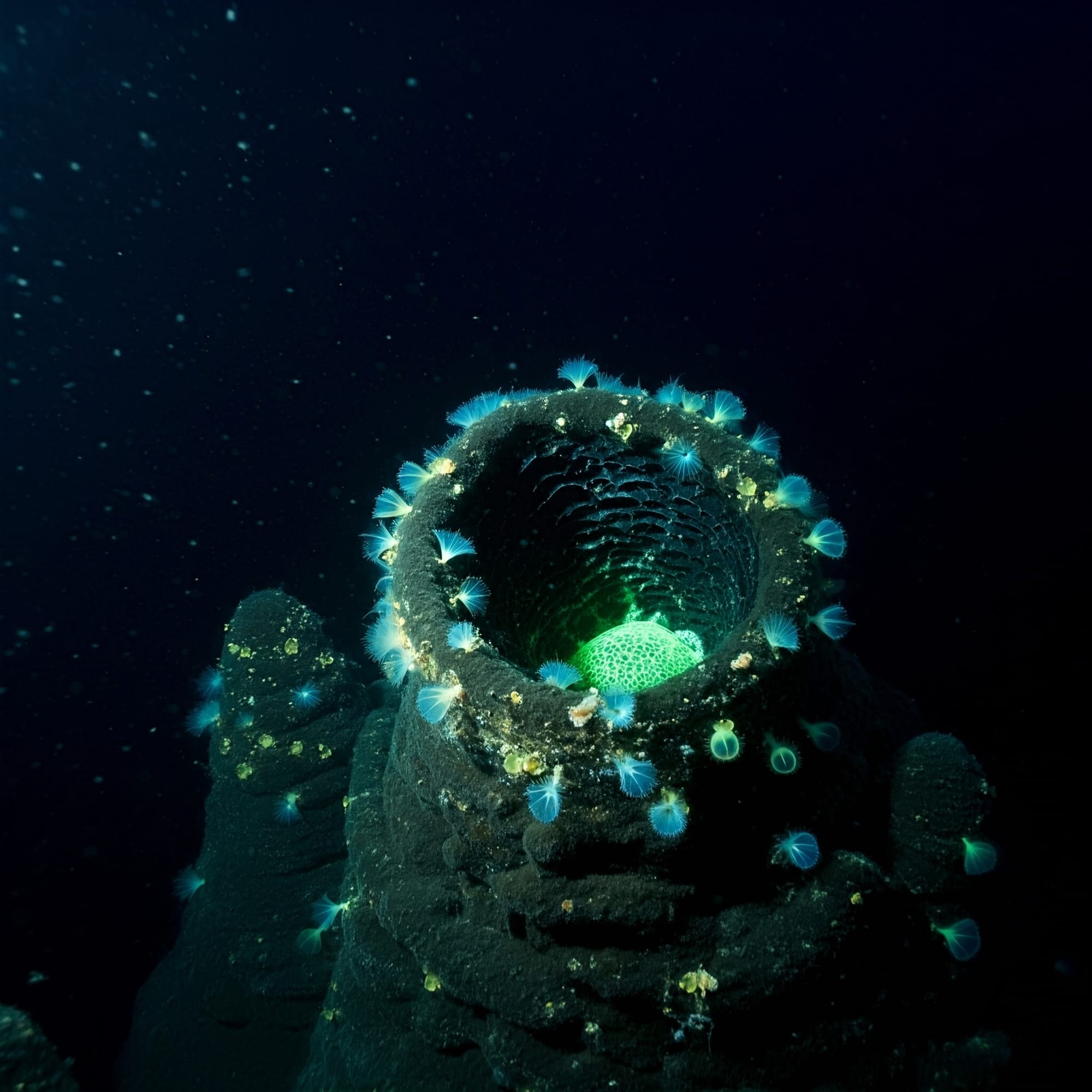
Seamounts and Trenches
Seamounts, underwater mountains that rise from the ocean floor, are often hotspots of biodiversity.
They create currents that bring nutrients to the surface, attracting a variety of marine life, including corals, sponges, and fish. Trenches, the deepest parts of the ocean, are also home to unique and specialized creatures that have adapted to the extreme pressure and darkness.
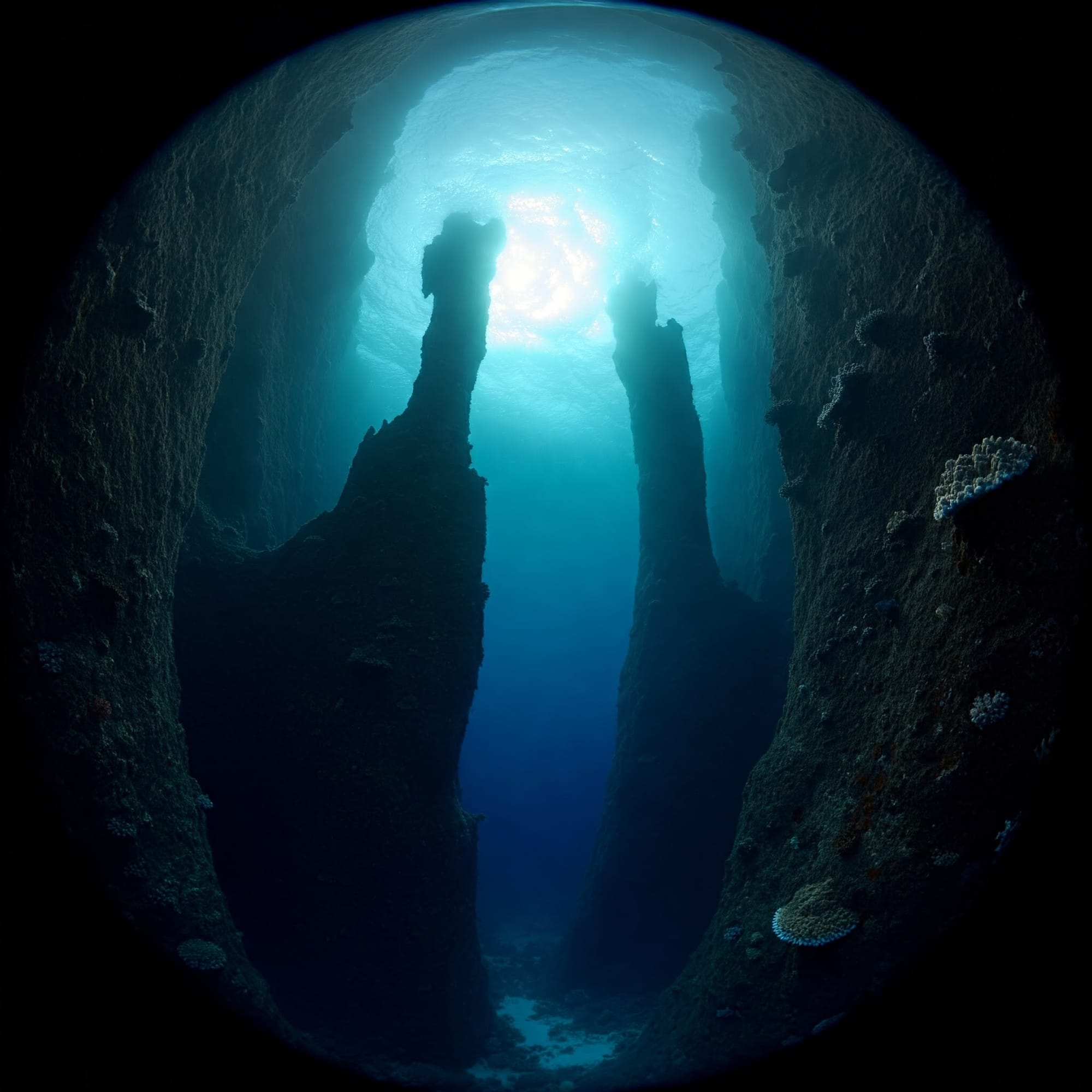
Exploring the Depths: Unveiling the Unknown
Our journey into the deep sea has been a long and challenging one, driven by human curiosity and a desire to understand the unknown.
History of Deep-Sea Exploration
Early attempts to explore the deep sea were hampered by technological limitations. Diving bells, invented in the 16th century, allowed divers to descend to shallow depths, but the crushing pressure of the deep sea remained a formidable barrier.
In the 19th century, the HMS Challenger expedition marked a turning point in deep-sea exploration. This groundbreaking scientific voyage circumnavigated the globe, collecting data and specimens from the ocean depths.
The Challenger expedition laid the foundation for modern oceanography, revealing the vastness and diversity of life in the deep sea.
Modern Technologies
Today, we have a suite of sophisticated tools to explore the deep sea. ROVs, equipped with cameras and sampling equipment, allow scientists to remotely explore the ocean floor, while AUVs can operate independently, mapping the seafloor and collecting data. Submersibles, such as the iconic Alvin and the Deepsea Challenger, which carried James Cameron to the bottom of the Mariana Trench, enable humans to venture into the abyss and witness its wonders firsthand.
Notable Discoveries
Deep-sea exploration has yielded a wealth of discoveries, from new species and ecosystems to insights into geological processes and climate change.
The discovery of hydrothermal vents in the 1970s revolutionized our understanding of life on Earth, revealing that life could thrive in the absence of sunlight.
The exploration of deep-sea trenches has uncovered unique creatures adapted to extreme pressure, such as the hadal snailfish, which lives at depths of over 8,000 meters.
The Deep Sea and Humanity
The deep sea is not only a realm of wonder and scientific discovery; it also plays a vital role in the health of our planet and has the potential to provide valuable resources.
Resources and Exploitation
The deep sea holds vast reserves of minerals and other resources, including manganese nodules, cobalt crusts, and rare earth elements. Deep-sea mining has the potential to provide valuable materials for our growing technological needs, but it also poses significant environmental risks.
The extraction of these resources could disrupt fragile deep-sea ecosystems and release harmful pollutants into the ocean.
Deep-sea fishing has also become a growing concern. As fish stocks in shallower waters decline, fishing fleets are venturing into deeper waters, targeting species that are often slow-growing and vulnerable to overexploitation.
The long-term impacts of deep-sea fishing on these fragile ecosystems are still poorly understood.
Conservation Efforts
Recognizing the importance of protecting the deep sea, conservation efforts are underway to safeguard these unique and vulnerable ecosystems.
Marine protected areas have been established in some regions to limit human activities and allow deep-sea ecosystems to recover.
International collaborations are also crucial to ensure the sustainable management of deep-sea resources and to protect the biodiversity of this unique environment.
The Future of Deep-Sea Exploration
The future of deep-sea exploration is filled with promise. New technologies are being developed to explore the deepest trenches and map the seafloor in greater detail.
Autonomous underwater vehicles are becoming increasingly sophisticated, capable of navigating complex terrain and collecting vast amounts of data. Advanced imaging techniques, such as 3D sonar and holographic microscopy, are providing unprecedented views of deep-sea life and habitats.
The role of citizen science is also expanding in deep-sea exploration. With the advent of affordable underwater cameras and remotely operated vehicles, amateur explorers can contribute to scientific research by documenting their observations and sharing data with scientists.
This collaborative approach is opening up new avenues for discovery and increasing public awareness of the importance of deep-sea conservation.
The Deep Sea Beckons
The deep sea once considered a barren and lifeless void, has been revealed as a realm of extraordinary biodiversity, unique adaptations, and ongoing discoveries. It's a world that challenges our understanding of life on Earth, reminding us of the incredible resilience and adaptability of organisms in the face of extreme conditions.
As we continue to explore the depths, we are constantly reminded of how much more there is to learn about this hidden world. New species are being discovered, new ecosystems are being revealed, and new insights into the interconnectedness of life on Earth are emerging.
But the deep sea is not only a source of wonder and scientific discovery; it also plays a vital role in the health of our planet. The deep ocean regulates our climate, provides food and resources, and supports a vast web of life that is essential for the well-being of our planet.
As we venture further into the deep, we must do so responsibly, balancing our desire for knowledge and resources with the need to protect this fragile and unique environment. The future of the deep sea depends on our ability to explore it sustainably, conserve its biodiversity, and appreciate its profound importance to life on Earth. The deep sea beckons, inviting us to continue our journey of discovery, to unveil its mysteries, and safeguard its wonders for generations to come.